With a few months to go before the release of the next version of Inscape VTS, which will leverage Unreal Engine for the very first time, the main developers share their thoughts on this major project. Mathieu Ruffat (product architect), Fabrice Tomasi (real-time 3D expert) and Christophe Claustre (Unreal Engine lead programmer) look back on the work that has been done and tell us what to expect over the near and medium term.
What were your main expectations in integrating Unreal Engine?
Fabrice Tomasi (FT): The first thing we were looking to do was to modernise the graphic quality of the applications originally developed on Vertigo (the in-house engine used by Inscape until now) and to improve performance. This last point is crucial for the user experience of our simulators, especially in Mixed Reality. But we also wanted to spend less time on in-house maintenance of the graphics engine, especially in terms of support for existing and future hardware devices. This will allow us to focus on the development of industry-specific functions and to further improve the ergonomics of our applications, for example.
Christophe Claustre (CC): Unreal Engine contains some of the most advanced graphic technologies, not only in the industry but in computer science in general. On a personal level, I was excited to have the opportunity to understand and build on top of Unreal Engine with access to the source code. But I am also thrilled to be able to offer these cutting-edge tools in Inscape VTS, a tool for non-programmers who may not have as much experience developing directly with Unreal.
‘‘Unreal Engine is the state-of-the-art, real-time 3D engine’
Why have you selected Unreal rather than another engine?
 Mathieu Ruffat (MR): Unreal Engine is the state-of-the-art, real-time 3D engine. Its reputation as a gaming engine, its active development with major innovations included in Unreal Engine 5, the recent possibility of integrating it as an engine in a host application, the wide support of platforms and devices and Epic Games’ commitment to innovation have made us choose this engine. In addition, Epic Games' licensing model makes its use very cost effective, both for software companies like ourselves, and for our industrial customers.
Mathieu Ruffat (MR): Unreal Engine is the state-of-the-art, real-time 3D engine. Its reputation as a gaming engine, its active development with major innovations included in Unreal Engine 5, the recent possibility of integrating it as an engine in a host application, the wide support of platforms and devices and Epic Games’ commitment to innovation have made us choose this engine. In addition, Epic Games' licensing model makes its use very cost effective, both for software companies like ourselves, and for our industrial customers.
CC: We have looked at Unreal Engine and Unity, but the announcement of the "Unreal Engine as a Library" feature, the availability of the source code, and the new features in UE5 settled the question. Unreal has a much higher graphic quality and its API is written in C++, a powerful language that the Inscape development team appreciates and masters.
What are the most important benefits of Unreal Engine from your point of view?
FT: In addition to the already proven robustness of this engine, a decisive quality is our confidence in long-term support.
MR: Unreal Engine is a powerful engine with superior graphic quality. It has a large community of users, a store of additional content and extensions and comes with a powerful editor, Unreal Editor, which allows 3D experts and programmers to harness its full power. It is also supported by many device manufacturers and library editors, so that most technologies in the virtual reality and augmented reality markets are very often "plug and play" in applications based on Unreal Engine. For example, new virtual reality headsets are becoming more and more complex to integrate into an in-house engine like ours. Unreal Engine usually supports them as soon as they are released, which is essential for some of our customers who are eager to evaluate their new possibilities as soon as they become available.
‘‘Not many people today have integrated Unreal engine into a host application like we have’’
What were the biggest challenges?
 FT: From a technical point of view, this is a recent functionality, therefore the challenge was undoubtedly to use Unreal Engine in a way that is still very uncommon, by integrating it as a rendering engine into an existing application (the Inscape VTS editor). This new way of using the engine as a middleware allows us to propose a WYSIWYG editor oriented towards subject-matter experts. This is a real benefit compared to other tools in the industry, which work either as a plugin of a general-purpose 3D editor or as two separate applications.
FT: From a technical point of view, this is a recent functionality, therefore the challenge was undoubtedly to use Unreal Engine in a way that is still very uncommon, by integrating it as a rendering engine into an existing application (the Inscape VTS editor). This new way of using the engine as a middleware allows us to propose a WYSIWYG editor oriented towards subject-matter experts. This is a real benefit compared to other tools in the industry, which work either as a plugin of a general-purpose 3D editor or as two separate applications.
In terms of user experience, we have worked hard to define a simple and efficient workflow. I think the solution we have come up with will truly excite our users. The creation of 3D environments and the development of end-user applications are done directly in Unreal Editor. The Inscape VTS editor makes it very easy to implement the behaviour of the virtual equipment and all of the pedagogical aspects. This allows users to really take advantage of all the possibilities provided by each editor.
MR: It is true that not many people today have integrated Unreal Engine into a host application like we have. It was quite a challenge! I would say that another major challenge was to ensure a transition from the old 3D engine, with the goal to make existing projects benefit from this new engine at a controlled cost. Finally, there was the key idea of providing a workflow allowing both a novice, to easily produce interactive content, and a more advanced user to harness the power of Unreal Engine.
CC: Another challenge was to find a compromise between the practices of Inscape VTS users and the Unreal concepts, which were not completely aligned at times. Our decision was to prioritise compliance with Unreal Engine concepts as much as possible to avoid falling into dead ends later on when the engine evolves. Nevertheless, we have tried to keep the API as similar as possible to the previous version, in order to facilitate the transition between the two.
‘‘The most exciting part is yet to come, for us and for our users’’
How did the collaboration with Epic Games work out?
FT: We have a great relationship with Epic Games. Their technical support is extremely responsive and we cannot recall how many times thay have come up with one or more solutions to sometimes challenging problems.
MR: The simulation team at Epic has been very supportive, offering advice and troubleshooting, and they have also worked with us to improve industry-specific features, such as the integration of Unreal Engine as a library as well as the import and transformation tools of a digital model data.
 CC: We were previously using an internal graphic engine for rendering, and gameplay was developed mainly in Inscape VTS. Hence, we had complete control over the code base and a lot of talented people to help us, if needed. Using Unreal, therefore, has been a leap into the unknown. What is more, since the Unreal Engine as a Library feature is very recent, we could not take advantage of the large user community. Fortunately, technical support is very responsive, and Epic was able to put us in touch with the experts we needed whenever we reported a problem or were unsure of what to do next.
CC: We were previously using an internal graphic engine for rendering, and gameplay was developed mainly in Inscape VTS. Hence, we had complete control over the code base and a lot of talented people to help us, if needed. Using Unreal, therefore, has been a leap into the unknown. What is more, since the Unreal Engine as a Library feature is very recent, we could not take advantage of the large user community. Fortunately, technical support is very responsive, and Epic was able to put us in touch with the experts we needed whenever we reported a problem or were unsure of what to do next.
What is the most exciting part of this project?
MR: Working with a modern engine that is widely used in the gaming world is very stimulating, even more so for our technical teams, mostly composed of gamers who have already experienced Unreal Engine for recreational purposes!
It is also great to have access to more graphic effects, to be less restricted by the complexity of 3D models, the number of light sources or the size of scenes. It opens up a lot of possibilities.
CC: I would say that the most exciting part is yet to come, for us and for our users. There are numerous features attached to this first release. For our part, we are confident, with the integration of Unreal Engine into Inscape VTS, that we will be working with the latest technology in version 5.0 and beyond, in the long run.

Unreal Engine is fully integrated into Inscape VTS Editor
What can users expect from this move?
FT: First of all, a much smoother and more visually appealing user experience. This has become crucial over the years, since professional training courses are being increasingly compared to video game standards. In order to attract, interest and retain students, the materials must be attractive and interactive.
Secondly, a much wider and faster support of the devices after their release. With Unreal Engine, we will be able to deploy training on even more platforms and devices: next-generation VR headsets, including standalone, mobile devices, future mixed-reality devices, etc.
Finally, our users will benefit tremendously from using the Unreal Editor to create their environments and applications. It will even be possible to integrate an Inscape VTS simulation into an existing Unreal project, which opens up many new possibilities!
MR: Users will benefit from a much higher graphic quality, with cutting-edge performance that will allow them to import and display very complex CAD models in real time. For developers, who will be using Unreal Engine to model or develop around Inscape VTS content, it is also an added value as Unreal Engine skills become more prevalent in the job market. Overall, we can expect to see further productivity improvements, both in developing educational content and in customising student stations.
CC : We first want to return to an ISO-functional state with the previous version by focusing on the strength of Inscape VTS, which enables users to quickly create training systems without any programming. We are gradually adding the many features that Unreal brings to the table. The future looks exciting too as we still have many ideas regarding what features to integrate into the next versions!



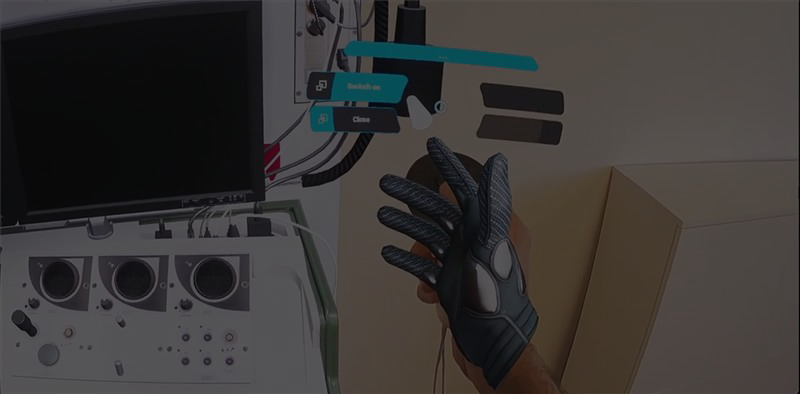
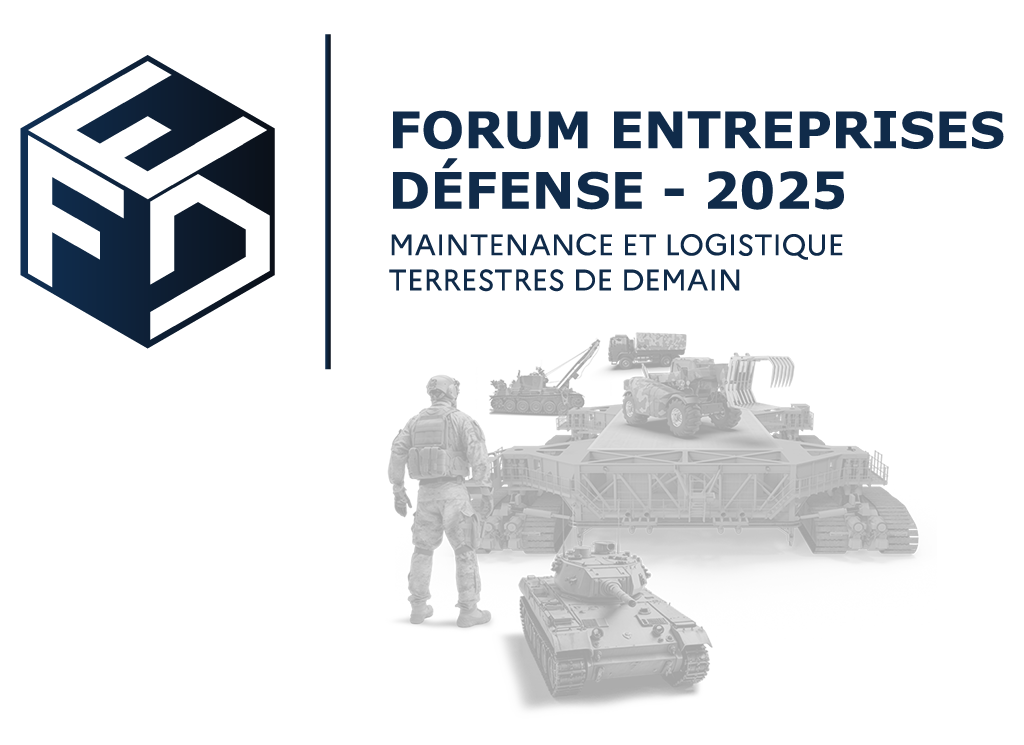
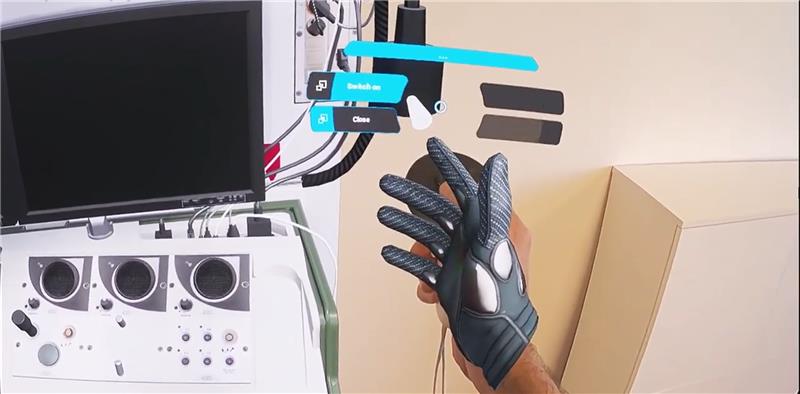
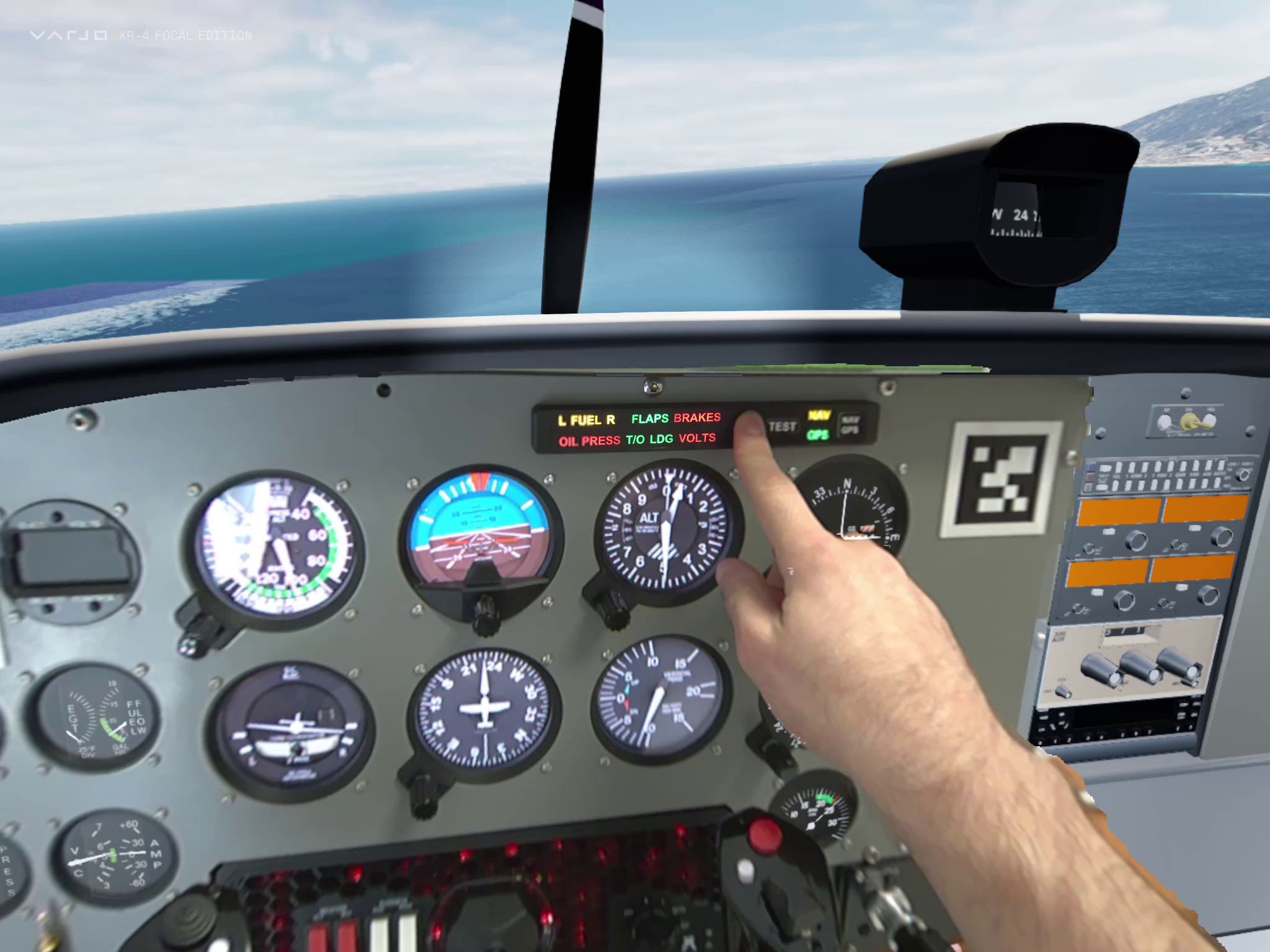

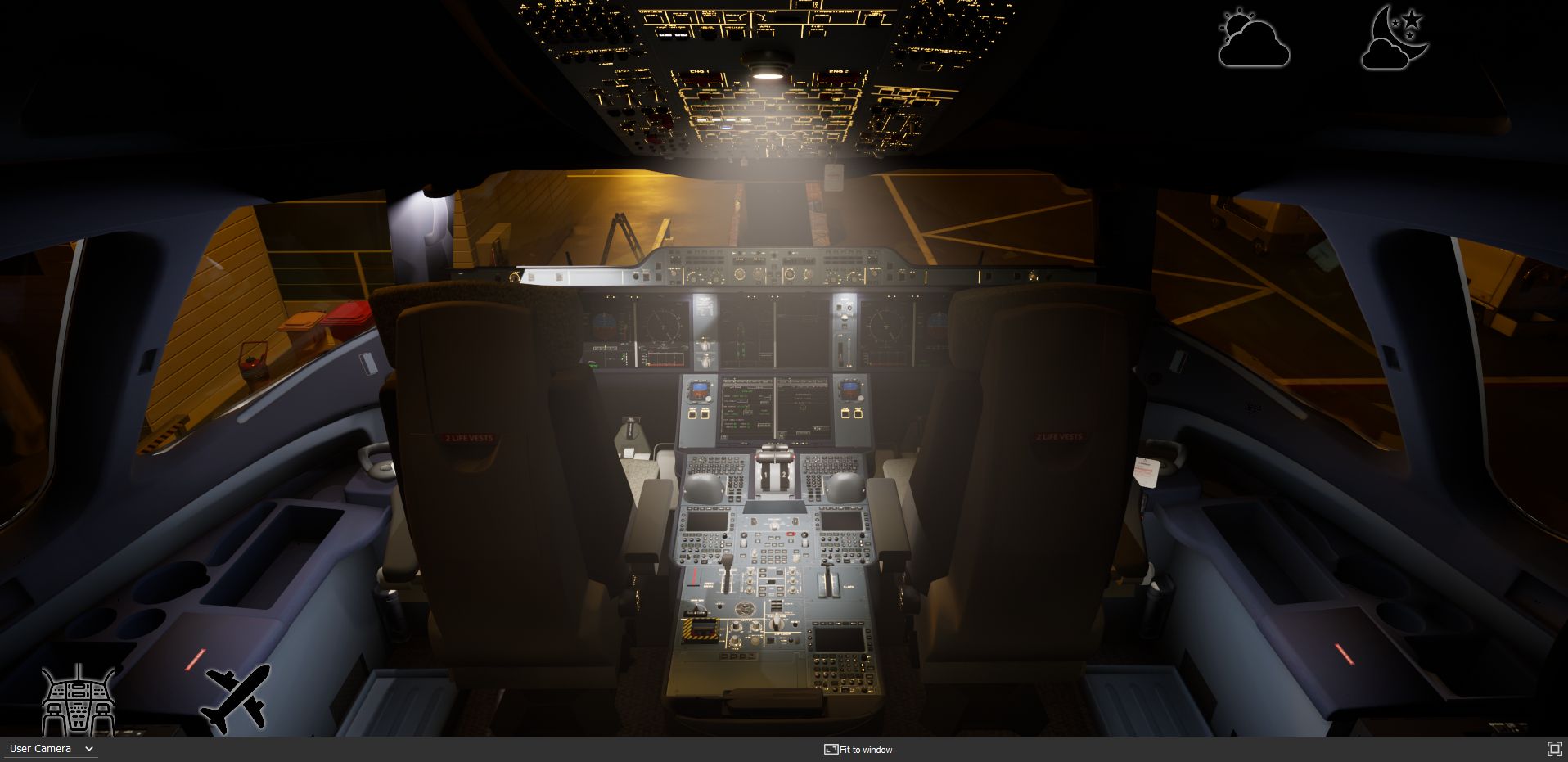

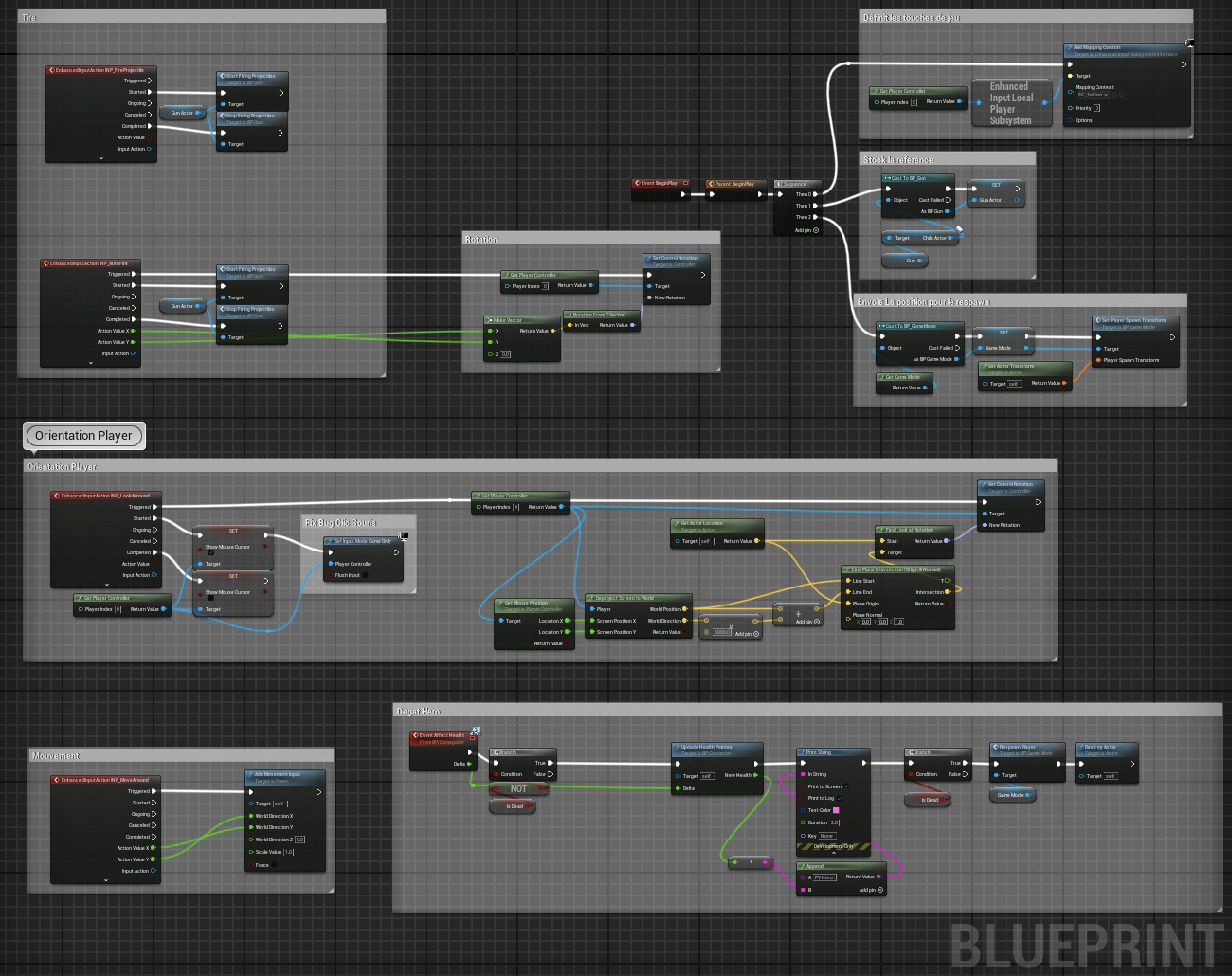
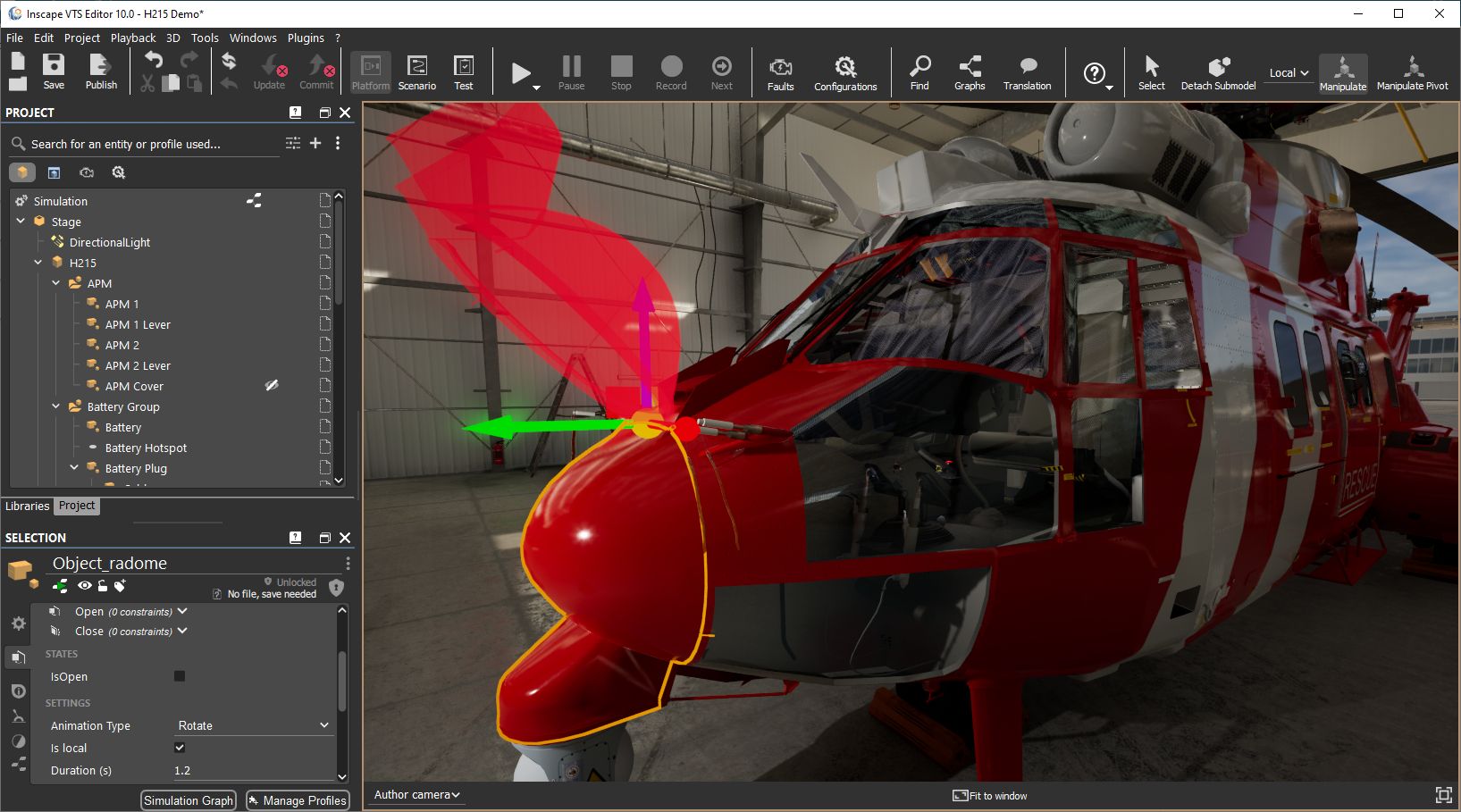
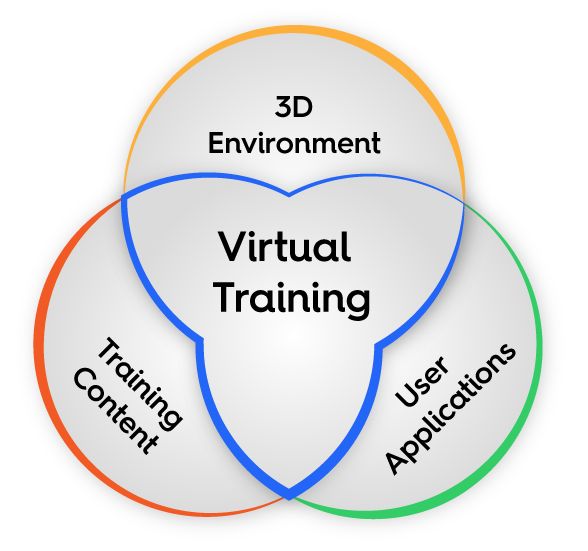
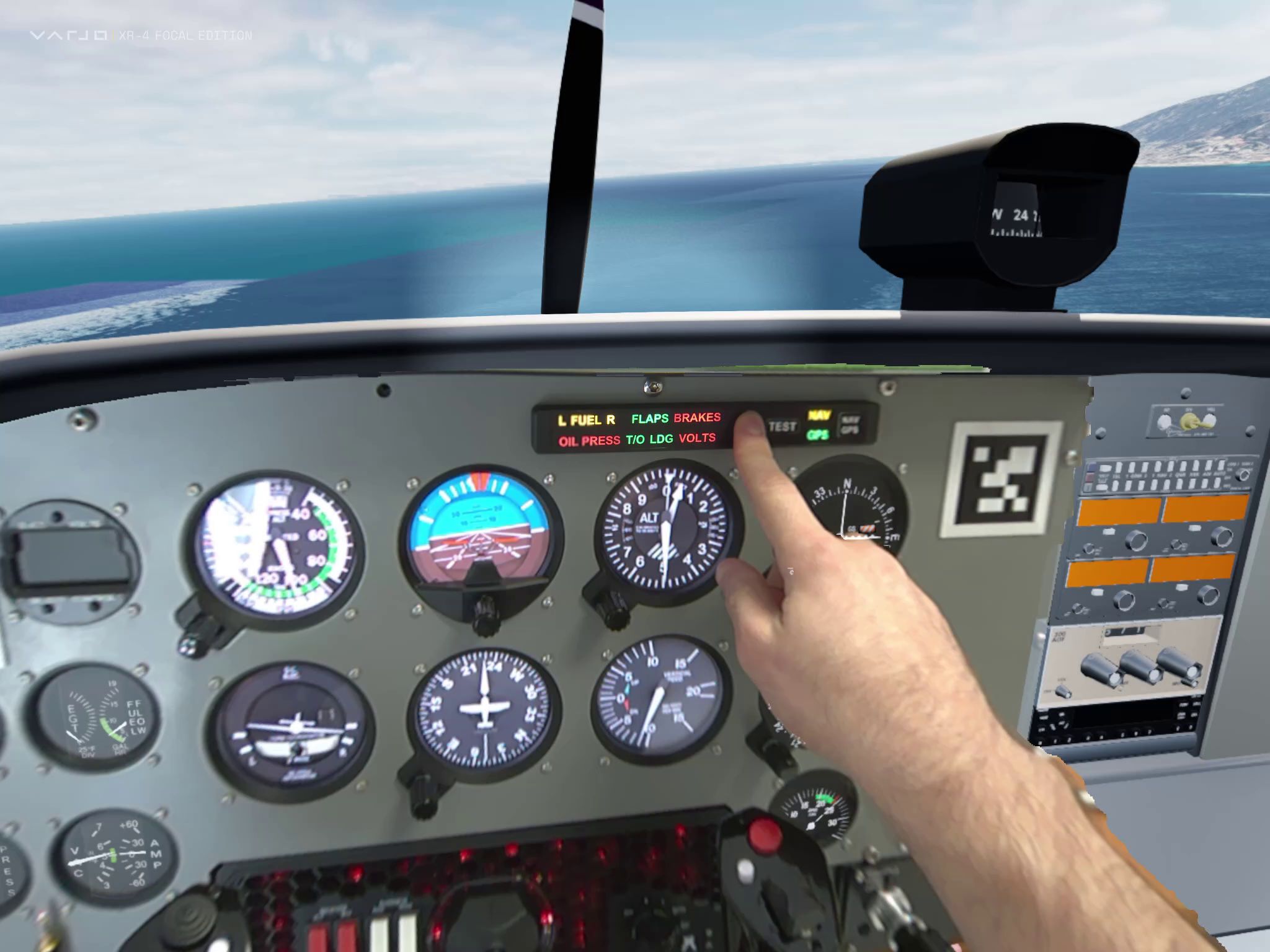
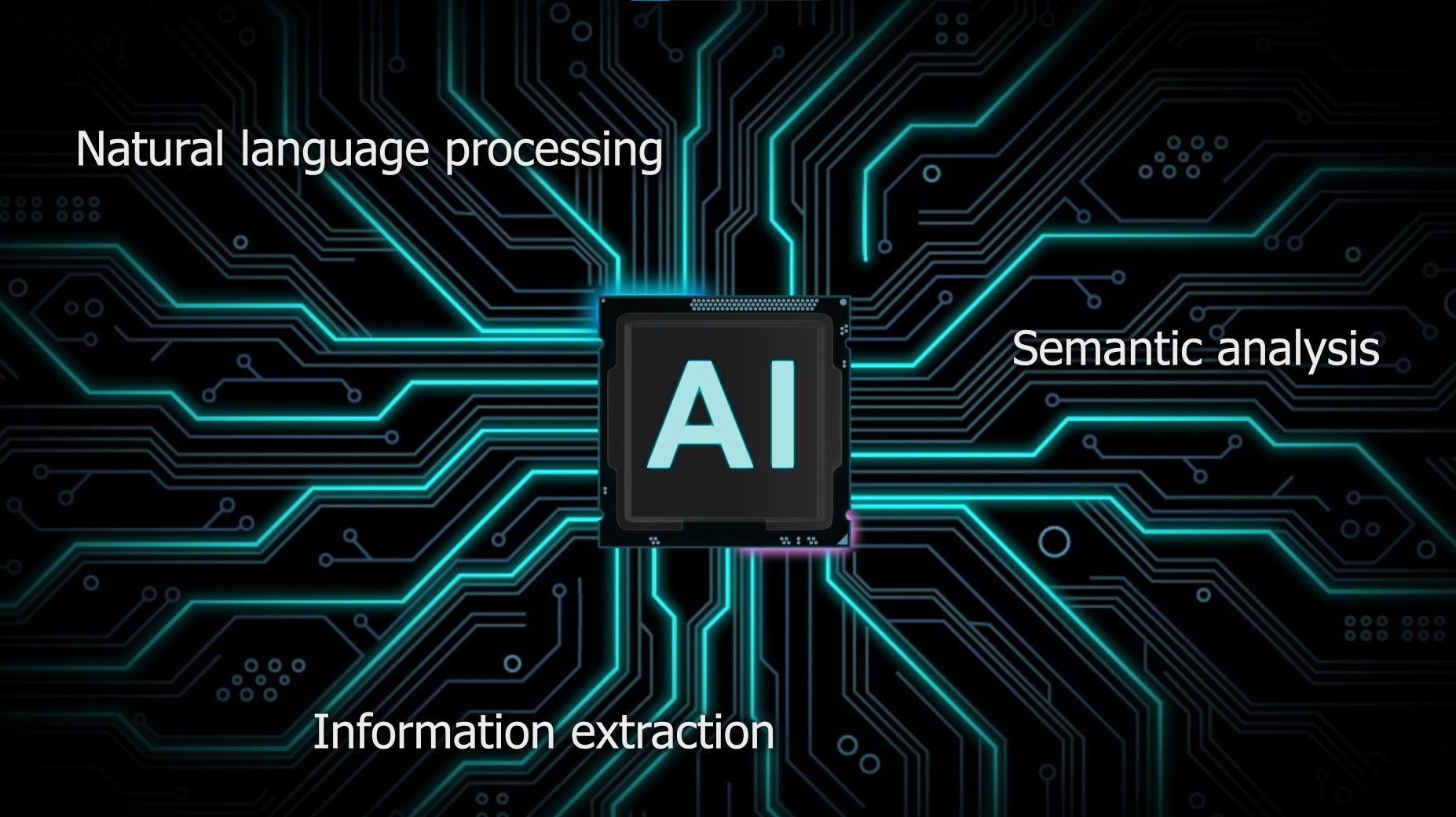 Future versions of Inscape VTS will likely incorporate ongoing research projects focused on using AI for the analysis of technical documentation and the automatic or assisted generation of content.
Future versions of Inscape VTS will likely incorporate ongoing research projects focused on using AI for the analysis of technical documentation and the automatic or assisted generation of content.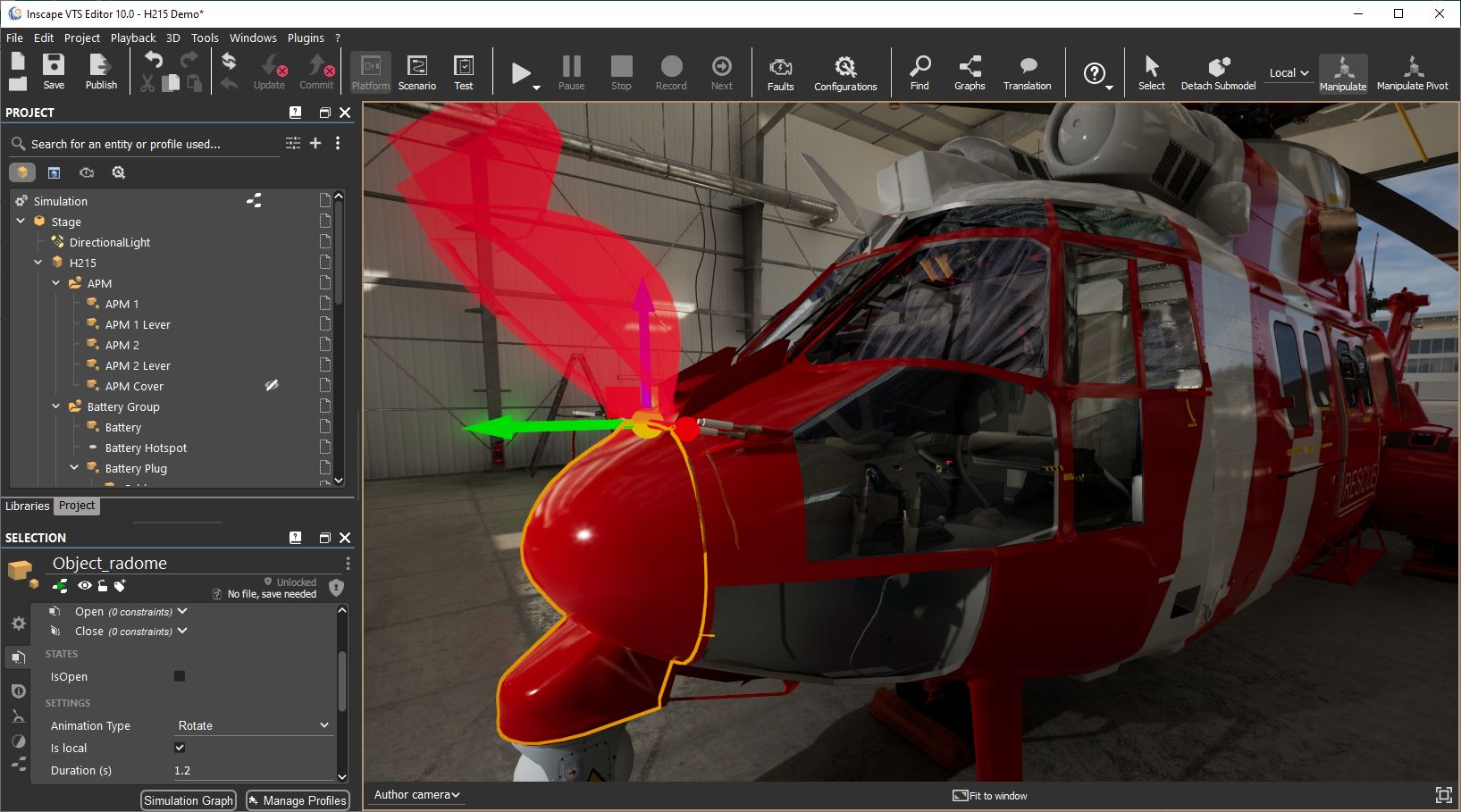


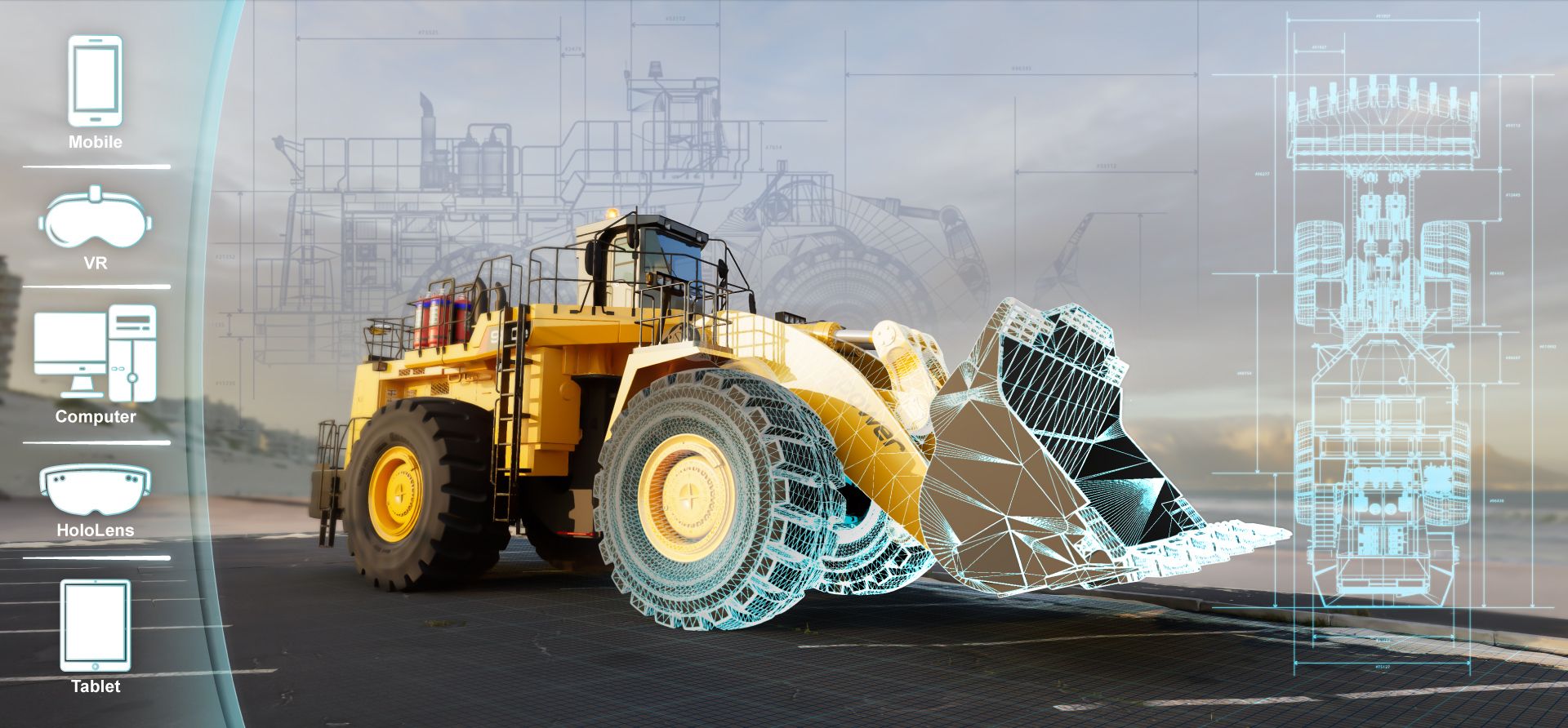



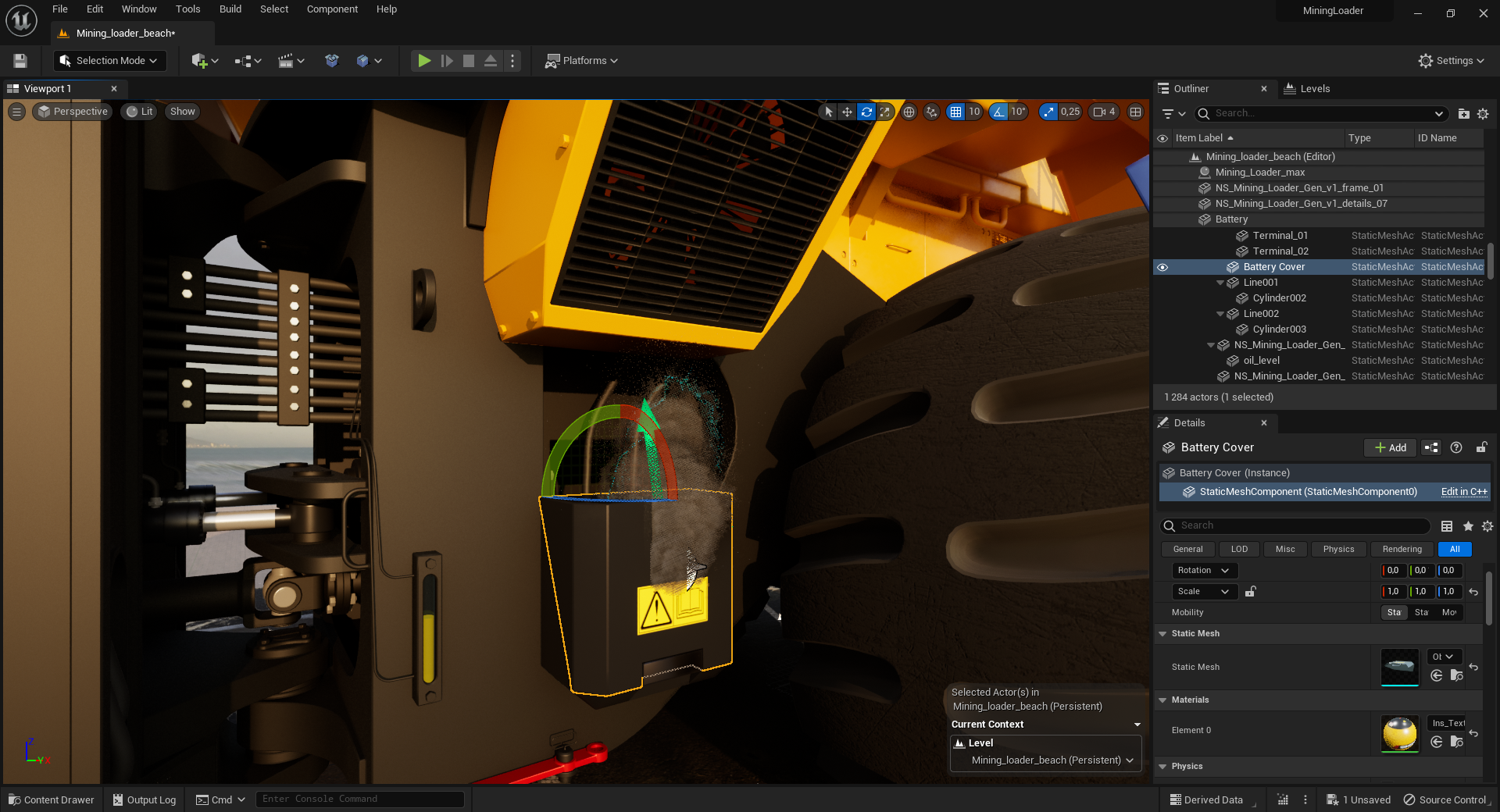
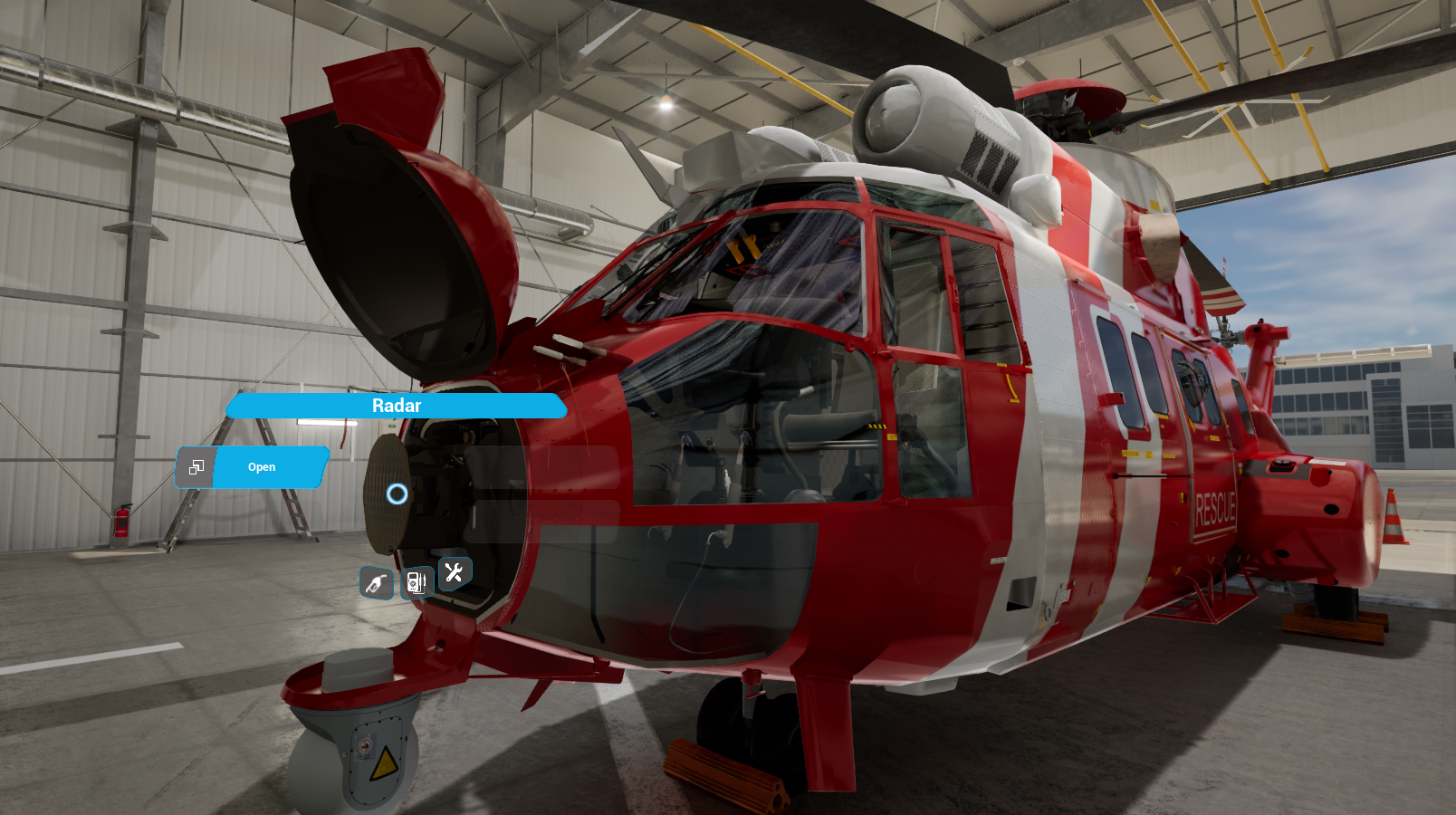
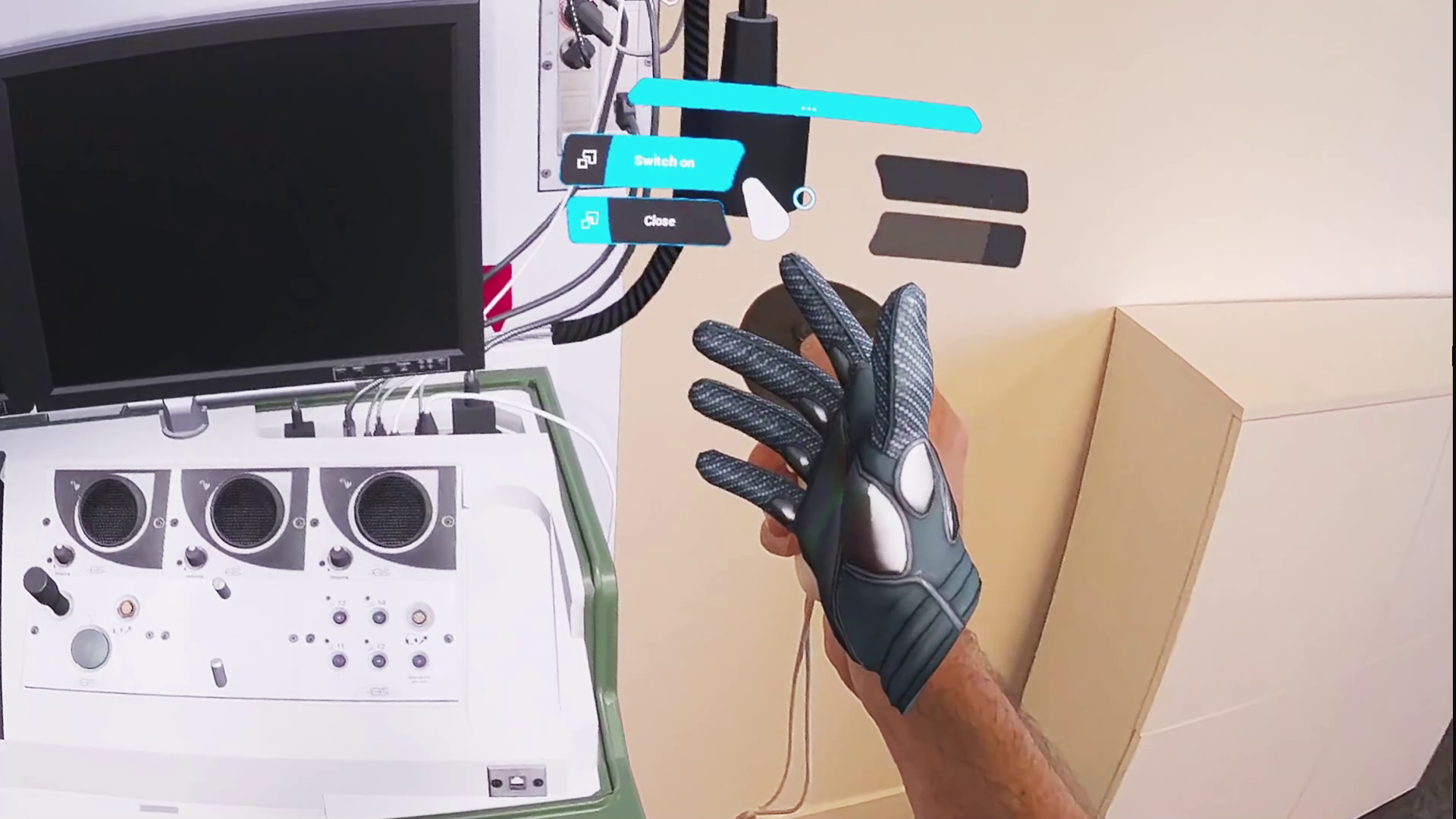
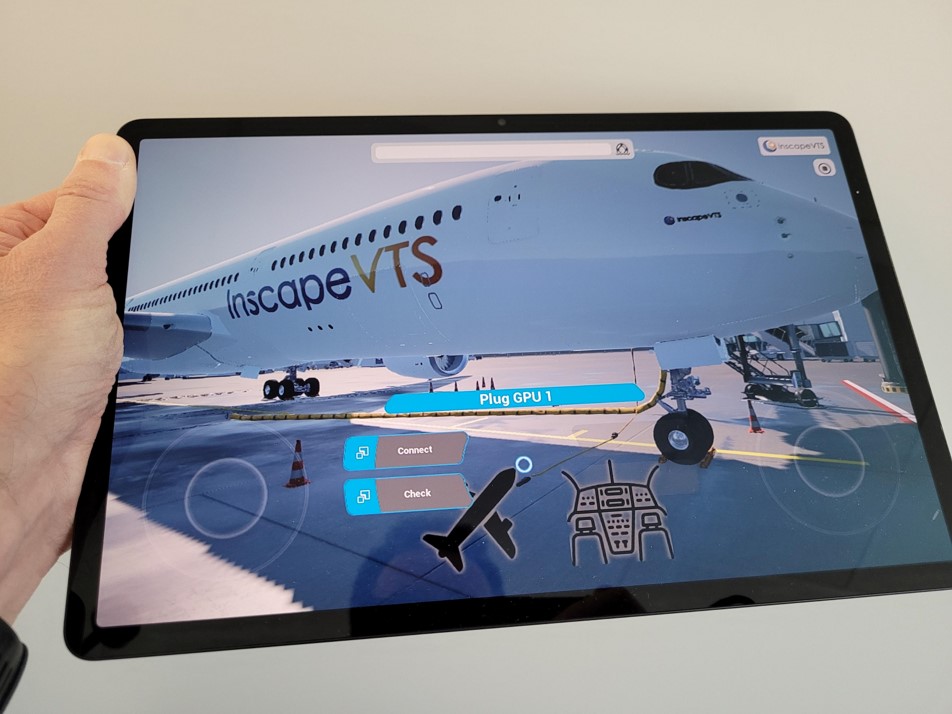
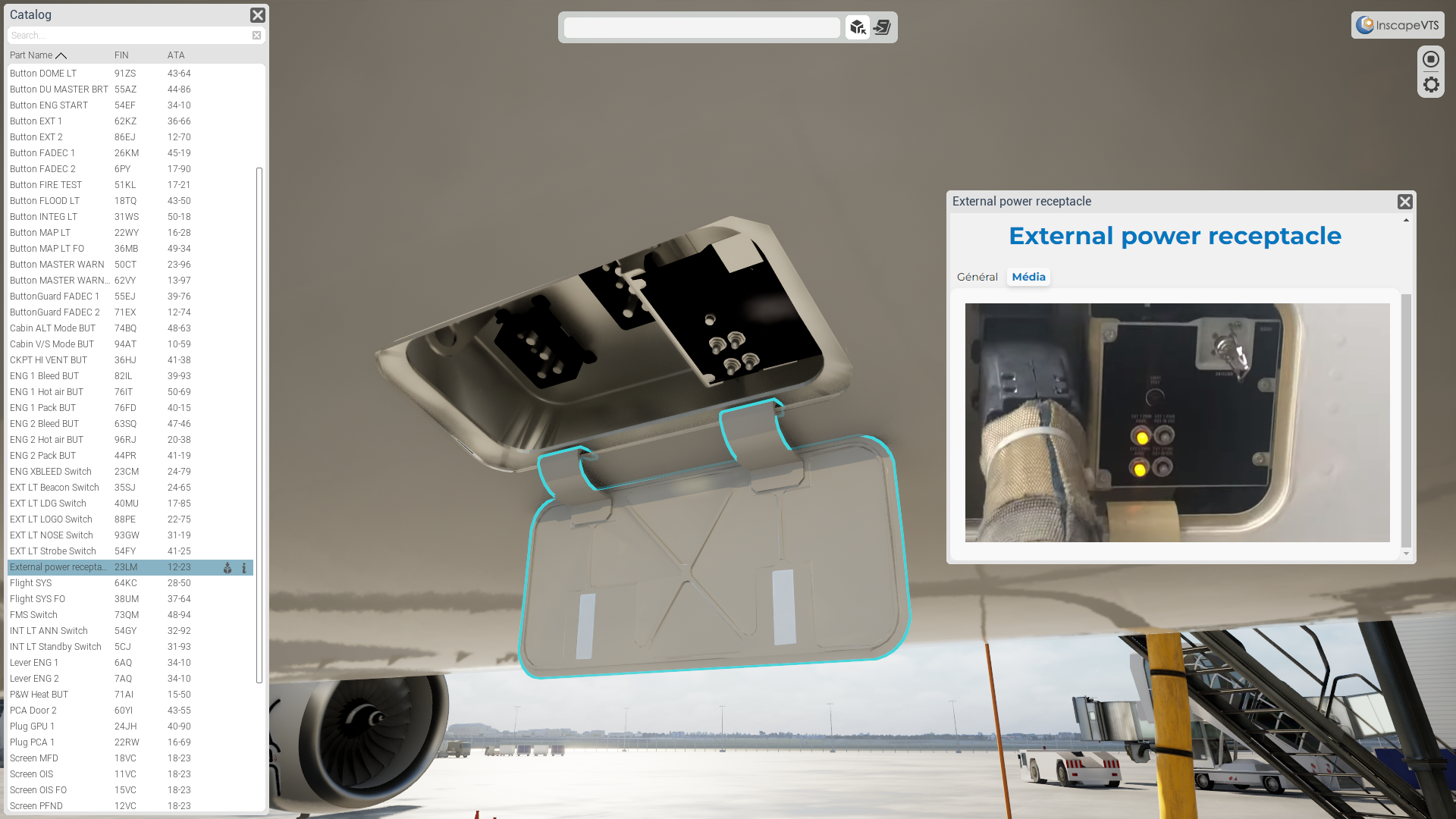
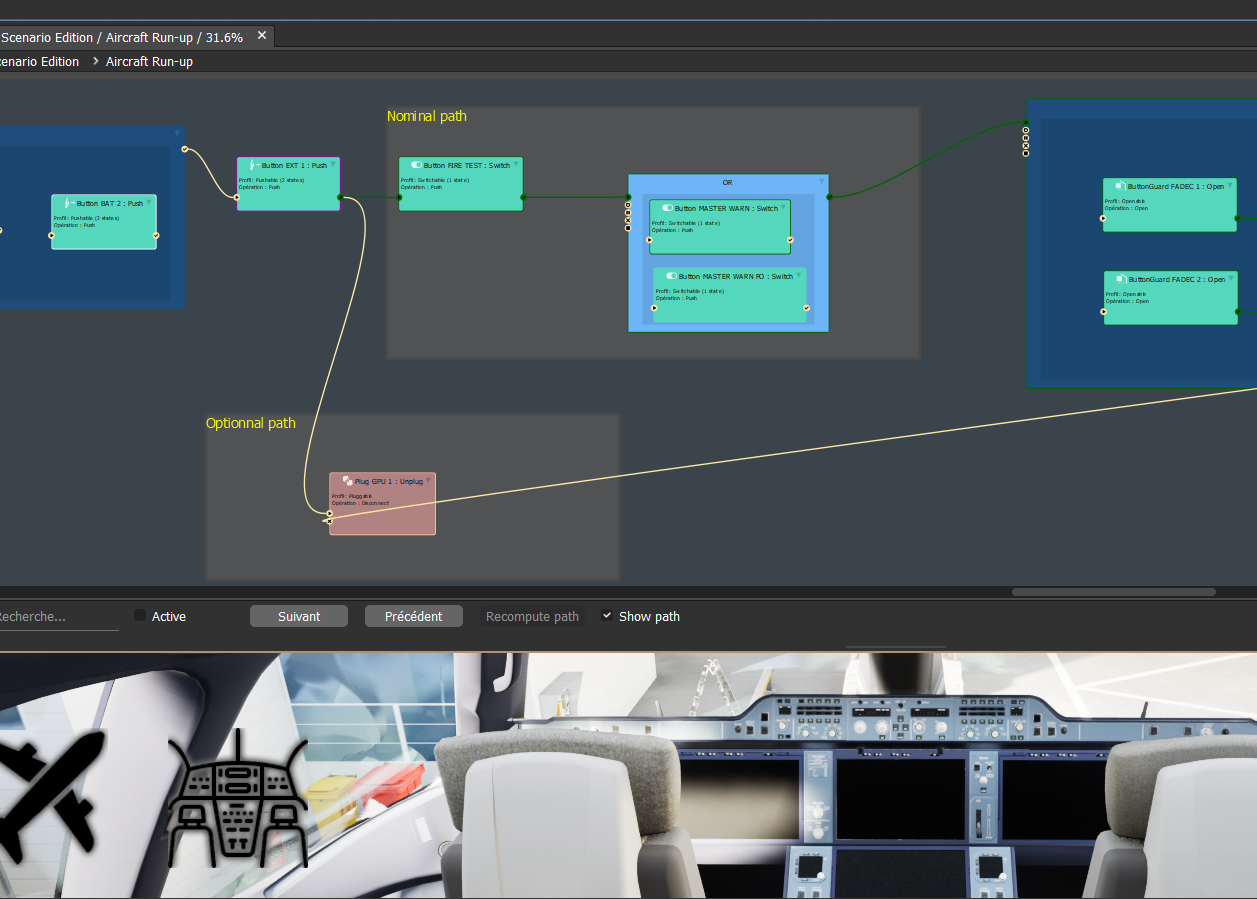






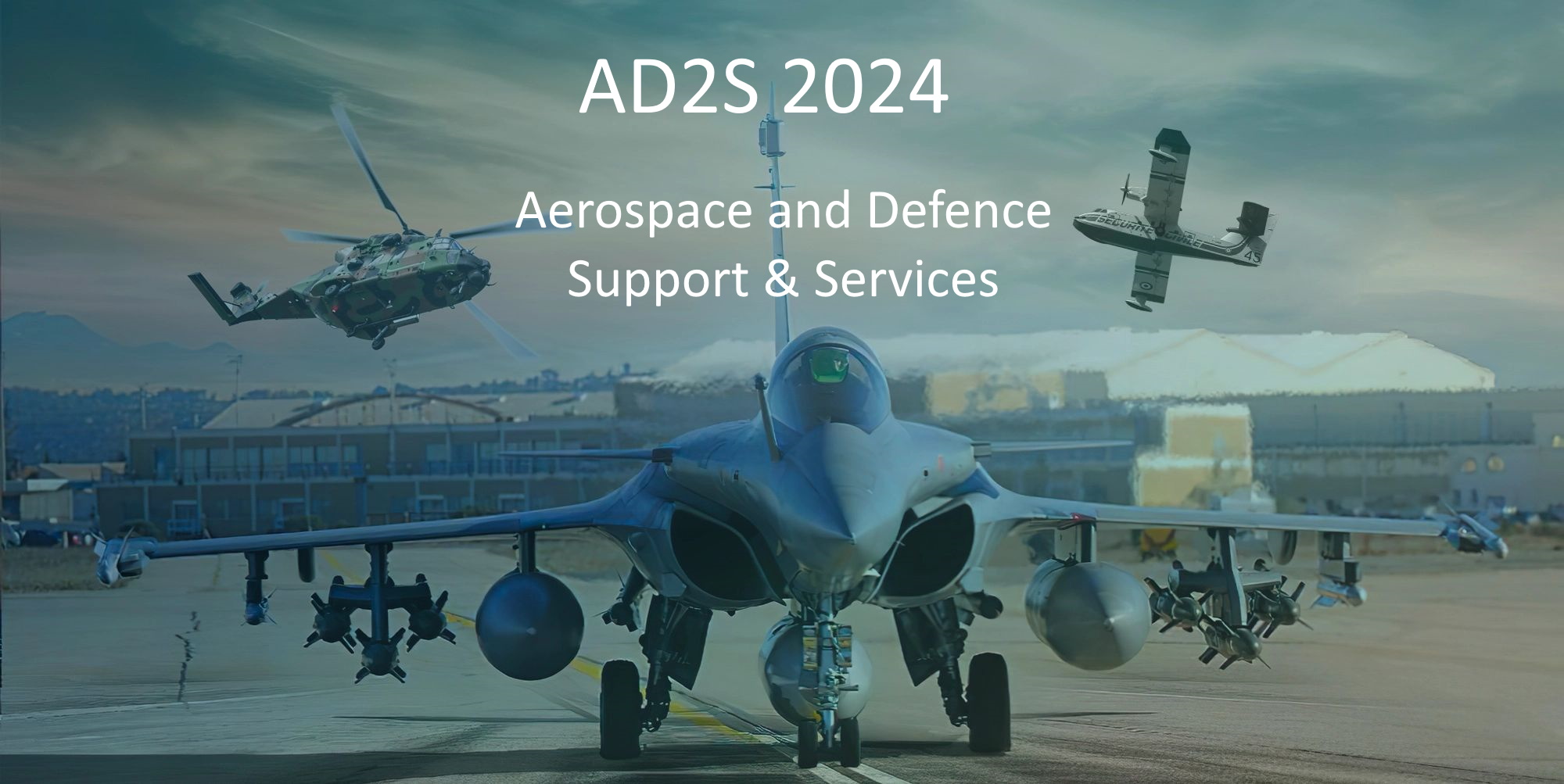
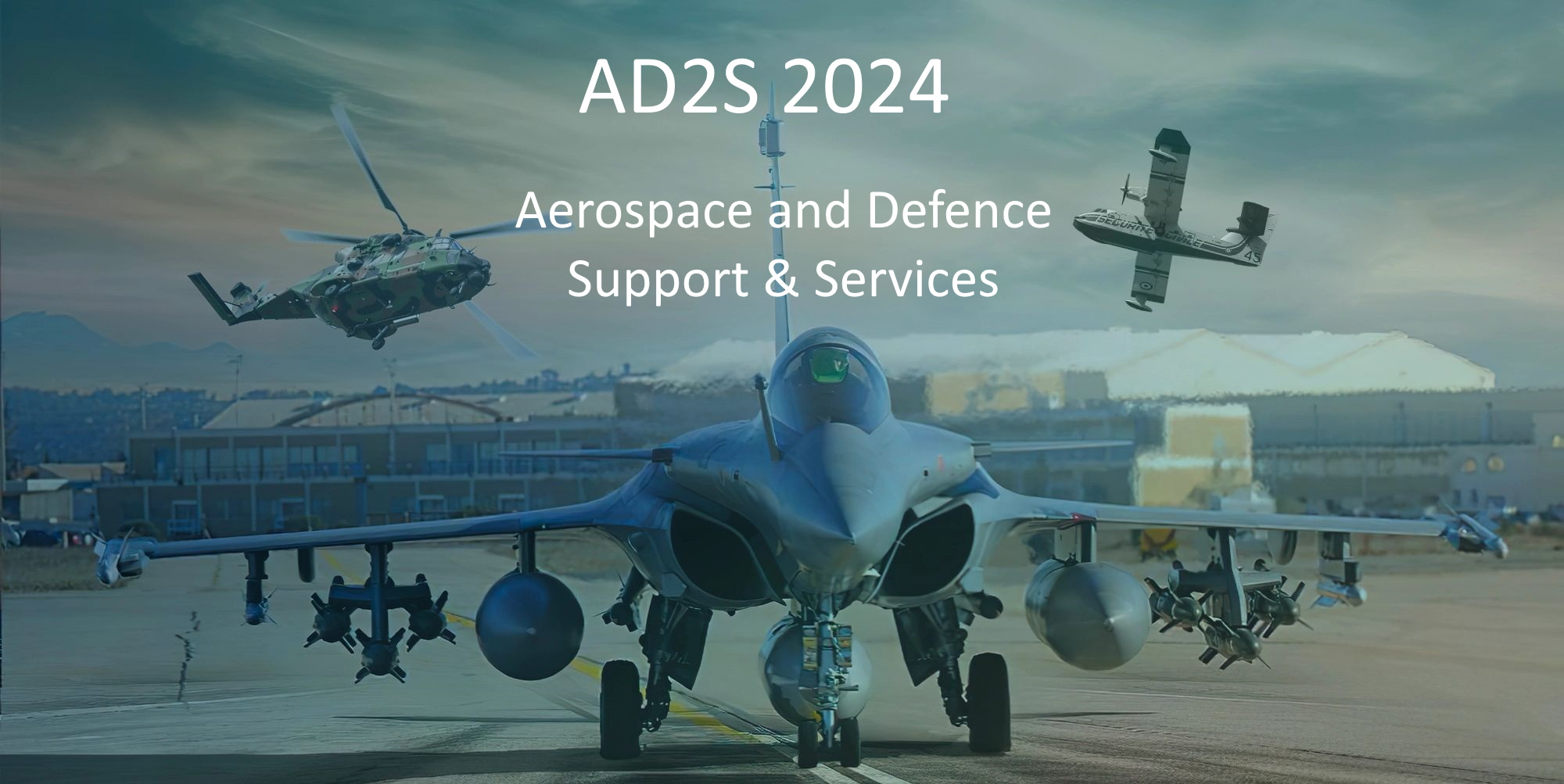
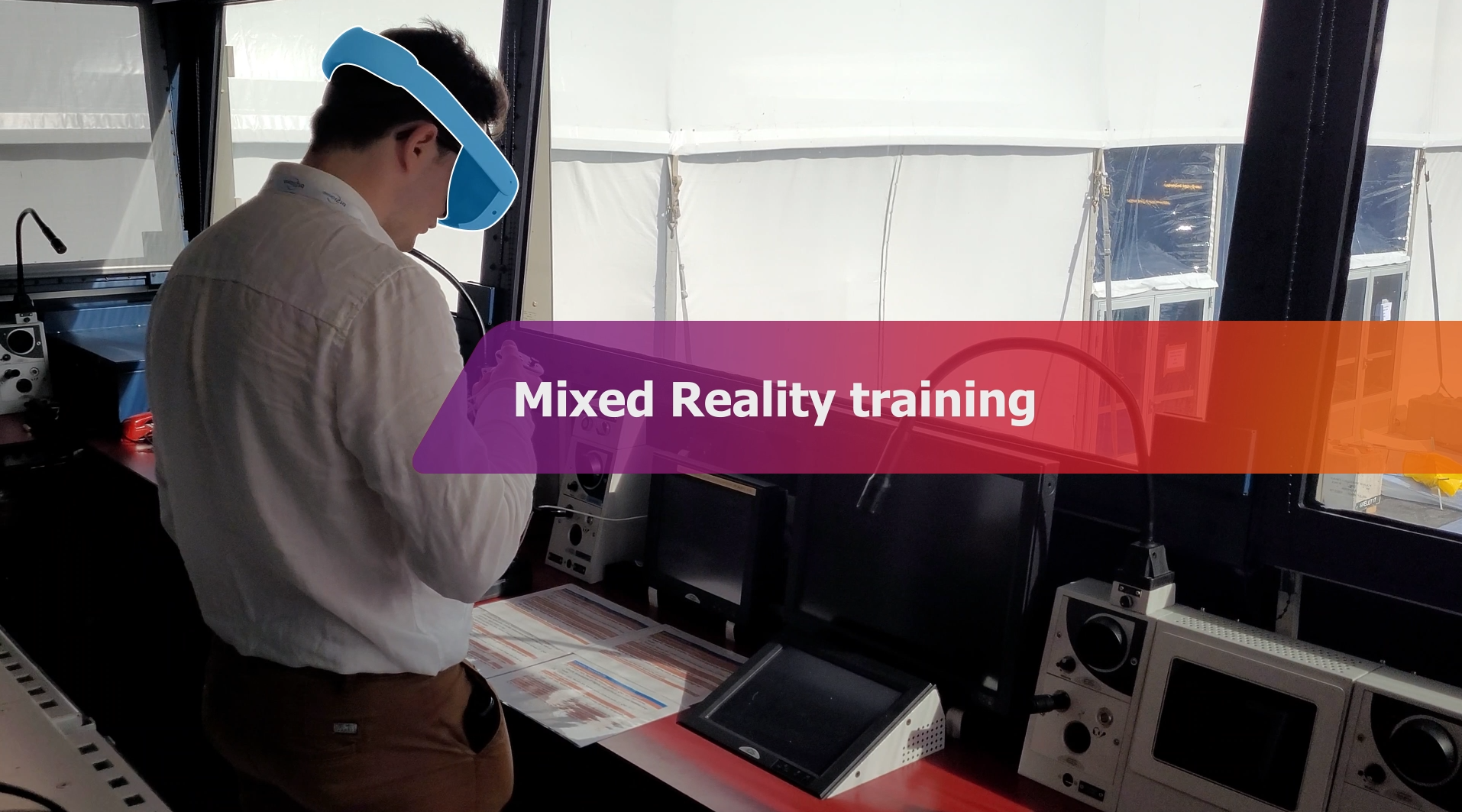
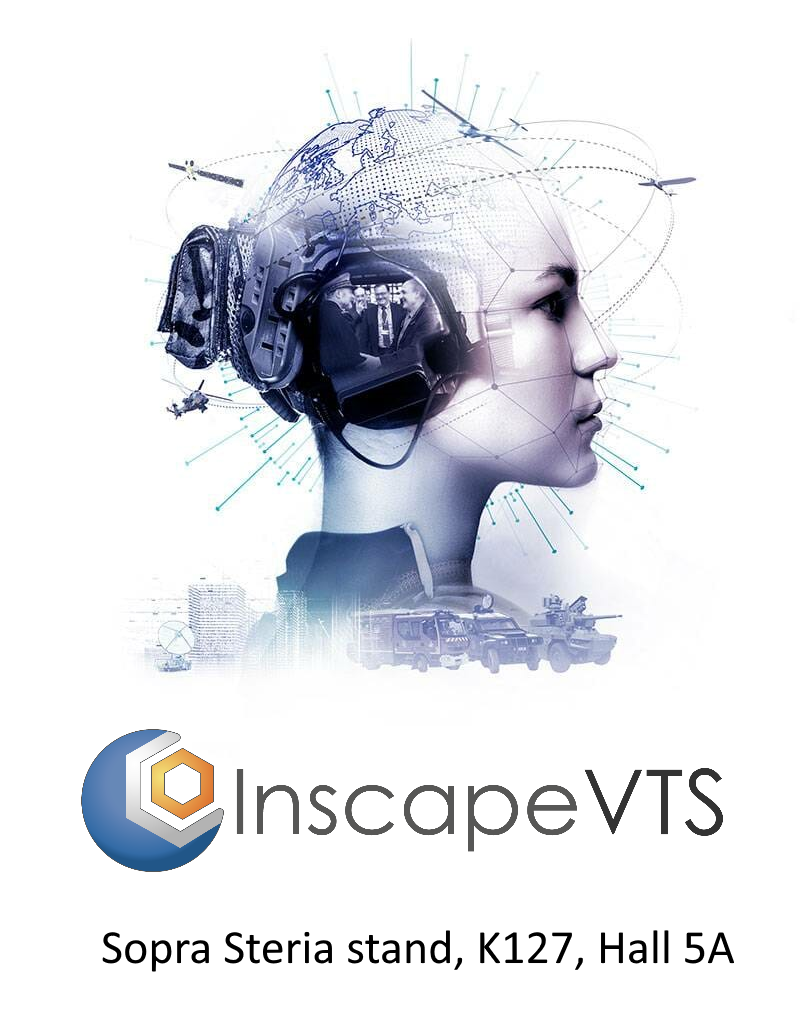
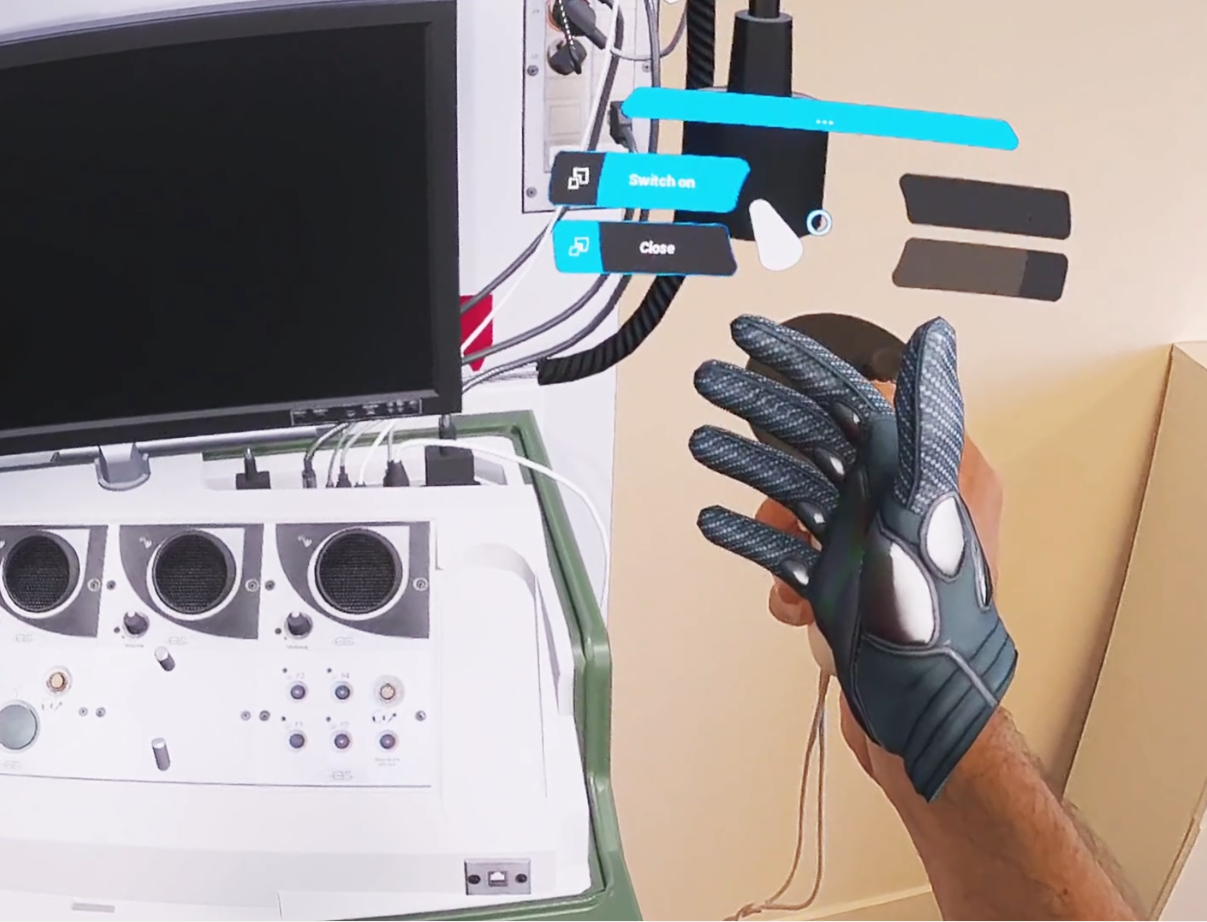




.jpg)

.png)
 With the help from Unreal, the advanced 3D engine developed by Epic Games, training for real using ultra-realistic training simulators, is the promise delivered by CS GROUP. A state-of-the-art 3D engine, Unreal Engine makes it possible to display ultra-detailed models in real time, including CAD design. With their 5.0 release, one may now disregard the number of polygons and replicate down to the tiniest detail without having to spend time on simplifying geometries manually. What is more, the new Lumen rendering engine allows for an even more accurate simulation of lighting, regardless of the number of light sources. For end users, this means more convincing training and more engagement, free of any misgivings due to a graphic quality out of step with the standards they are accustomed to.
With the help from Unreal, the advanced 3D engine developed by Epic Games, training for real using ultra-realistic training simulators, is the promise delivered by CS GROUP. A state-of-the-art 3D engine, Unreal Engine makes it possible to display ultra-detailed models in real time, including CAD design. With their 5.0 release, one may now disregard the number of polygons and replicate down to the tiniest detail without having to spend time on simplifying geometries manually. What is more, the new Lumen rendering engine allows for an even more accurate simulation of lighting, regardless of the number of light sources. For end users, this means more convincing training and more engagement, free of any misgivings due to a graphic quality out of step with the standards they are accustomed to..jpg)

 Mathieu Ruffat (MR): Unreal Engine is the state-of-the-art, real-time 3D engine. Its reputation as a gaming engine, its active development with major innovations included in Unreal Engine 5, the recent possibility of integrating it as an engine in a host application, the wide support of platforms and devices and Epic Games’ commitment to innovation have made us choose this engine. In addition, Epic Games' licensing model makes its use very cost effective, both for software companies like ourselves, and for our industrial customers.
Mathieu Ruffat (MR): Unreal Engine is the state-of-the-art, real-time 3D engine. Its reputation as a gaming engine, its active development with major innovations included in Unreal Engine 5, the recent possibility of integrating it as an engine in a host application, the wide support of platforms and devices and Epic Games’ commitment to innovation have made us choose this engine. In addition, Epic Games' licensing model makes its use very cost effective, both for software companies like ourselves, and for our industrial customers. FT: From a technical point of view, this is a recent functionality, therefore the challenge was undoubtedly to use Unreal Engine in a way that is still very uncommon, by integrating it as a rendering engine into an existing application (the Inscape VTS editor). This new way of using the engine as a middleware allows us to propose a WYSIWYG editor oriented towards subject-matter experts. This is a real benefit compared to other tools in the industry, which work either as a plugin of a general-purpose 3D editor or as two separate applications.
FT: From a technical point of view, this is a recent functionality, therefore the challenge was undoubtedly to use Unreal Engine in a way that is still very uncommon, by integrating it as a rendering engine into an existing application (the Inscape VTS editor). This new way of using the engine as a middleware allows us to propose a WYSIWYG editor oriented towards subject-matter experts. This is a real benefit compared to other tools in the industry, which work either as a plugin of a general-purpose 3D editor or as two separate applications. CC: We were previously using an internal graphic engine for rendering, and gameplay was developed mainly in Inscape VTS. Hence, we had complete control over the code base and a lot of talented people to help us, if needed. Using Unreal, therefore, has been a leap into the unknown. What is more, since the Unreal Engine as a Library feature is very recent, we could not take advantage of the large user community. Fortunately, technical support is very responsive, and Epic was able to put us in touch with the experts we needed whenever we reported a problem or were unsure of what to do next.
CC: We were previously using an internal graphic engine for rendering, and gameplay was developed mainly in Inscape VTS. Hence, we had complete control over the code base and a lot of talented people to help us, if needed. Using Unreal, therefore, has been a leap into the unknown. What is more, since the Unreal Engine as a Library feature is very recent, we could not take advantage of the large user community. Fortunately, technical support is very responsive, and Epic was able to put us in touch with the experts we needed whenever we reported a problem or were unsure of what to do next.
































